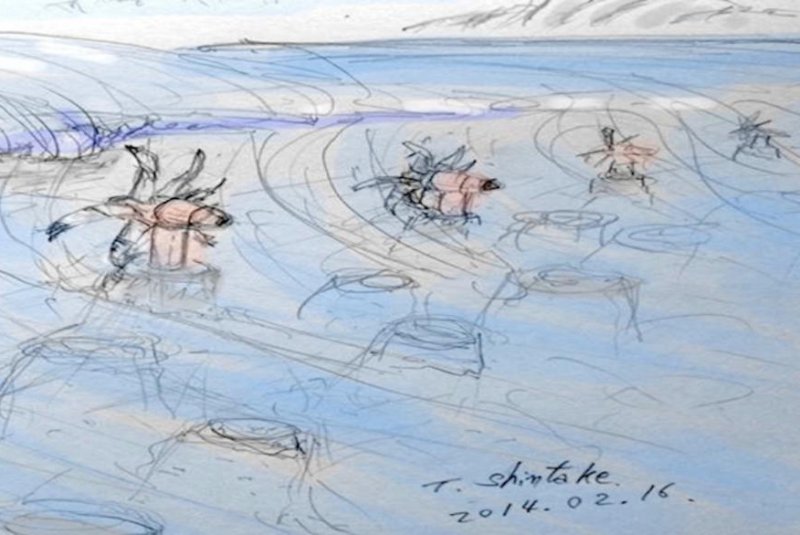The idea for the Wave Energy Converter began as a series of simple sketches. Photo by Okinawa Institute of Science and Technology Graduate University
Sept. 22 (UPI) -- A team of researchers at the Okinawa Institute of Science and Technology Graduate University in Japan want to make the ocean an affordable source of renewable energy.
Engineers at OIST have already harnessed the energy of ocean currents using underwater turbines. Now, the group is targeting the kinetic power of waves. The team is preparing to install turbines where the energy of the ocean is most apparent.
"Particularly in Japan, if you go around the beach you'll find many tetrapods," Tsumoru Shintake, a professor at OIST, said in a news release.
Tetrapods are pyramid-like concrete structures designed to dampen the force of incoming waves and protect beaches from erosion.
Shintake wants to replace tetrapods with turbines designed to convert wave energy into electricity.
"Surprisingly, 30 percent of the seashore in mainland Japan is covered with tetrapods and wave breakers," Shintake said. "Using just 1 percent of the seashore of mainland Japan can [generate] about 10 gigawats [of energy], which is equivalent to 10 nuclear power plants. That's huge."
Shintake and his colleagues began designing their turbine prototype in 2013. They named the technology the Wave Energy Converter. The turbines are designed to withstand the force of large waves generated by typhoons and big ocean storms.
The turbine's blades were inspired by dolphin fins -- strong but flexible. The post, or stem, on which the turbine is mounted is also flexible -- like a flower. It is designed to bend but not break.
"The stem of a flower bends back against the wind," said Shintake.
WECs will rise just above the sea's surface when the ocean is calm, but will be submerged by onrushing waves. Because the blades only spin but so fast, fish who get caught will be able to escape.
The engineers are now preparing to install their first prototypes, half-scale models, in the ocean. The turbines will power LED fixtures to demonstrate their potential.
"I'm imagining the planet two hundred years later," Shintake said. "I hope these [turbines] will be working hard quietly, and nicely, on each beach on which they have been installed."















